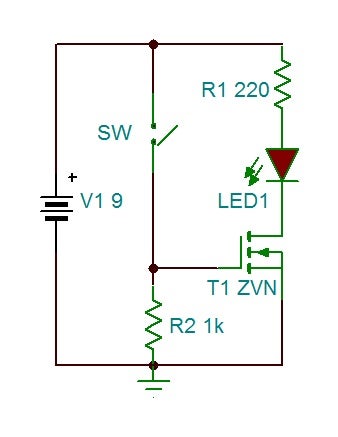Alright, let’s talk about MOSFETs. Specifically, the drain and source. I spent a good chunk of yesterday messing around with these things, and I figured I’d share what I learned, or at least, what I think I learned. I’m no expert, just a guy who likes to tinker.

First off, the basics: MOSFETs are like tiny electronic switches. They control the flow of current between the drain and the source, and the gate is what you use to control it. Think of it like a water faucet. The gate is the handle, and the drain and source are where the water flows.
So, yesterday, I started by trying to identify the drain and source pins on a random MOSFET I had lying around. Datasheets are your friends, people! Seriously. I hunted down the datasheet for my specific MOSFET (it was some generic one I salvaged from an old power supply), and it clearly showed which pin was which. Always, always start with the datasheet. Trust me on this.
Next, the fun part: testing. I wanted to see how this thing actually worked. I rigged up a simple circuit on a breadboard. I used a 5V power supply, a resistor, an LED, and of course, the MOSFET. The basic idea was to connect the LED and resistor in series between the drain and the 5V supply. The source was connected to ground. And then, I could apply a voltage to the gate to see if I could turn the LED on and off.
The gotcha? The gate voltage! This is where I stumbled a bit. You need to apply the right voltage to the gate to actually turn the MOSFET on. Too little voltage, and it stays off. Too much, and… well, I didn’t want to fry the thing, so I didn’t push it too hard. Again, the datasheet is your friend here. It will tell you the threshold voltage (Vgs(th)), which is the minimum voltage you need to apply to the gate to get the MOSFET to start conducting.
I started by applying a small voltage to the gate (like 1V). Nothing. The LED stayed off. Then I slowly increased the voltage. At around 3V, the LED started to flicker. Bingo! As I increased the voltage further (up to about 5V), the LED got brighter and brighter. Success! I was controlling the current flow between the drain and the source with the gate voltage.

Here’s a list of components I used:
- MOSFET (some random N-channel MOSFET)
- Breadboard
- Jumper wires (a whole bunch of ’em)
- 5V power supply
- 220 ohm resistor
- LED
- Multimeter (for measuring voltages)
What I messed up: I initially mixed up the drain and source pins. The LED didn’t light up no matter what I did with the gate. That’s when I realized I needed to double-check the datasheet… again! It’s easy to get these things wrong, especially when you’re staring at tiny pins on a breadboard.
What I learned: MOSFETs are pretty cool! Controlling current with voltage is a fundamental concept in electronics, and playing around with a MOSFET like this really helped solidify my understanding. Plus, seeing that LED light up because I made it happen is always a satisfying feeling.
Next steps: I want to try using a PWM signal to control the gate voltage, which would allow me to dim the LED instead of just turning it on and off. That’ll be a project for another day.
Anyway, that’s my drain and source adventure for today. Hope it was helpful (or at least entertaining) for someone out there. Now, I’m gonna go grab a coffee. Cheers!


